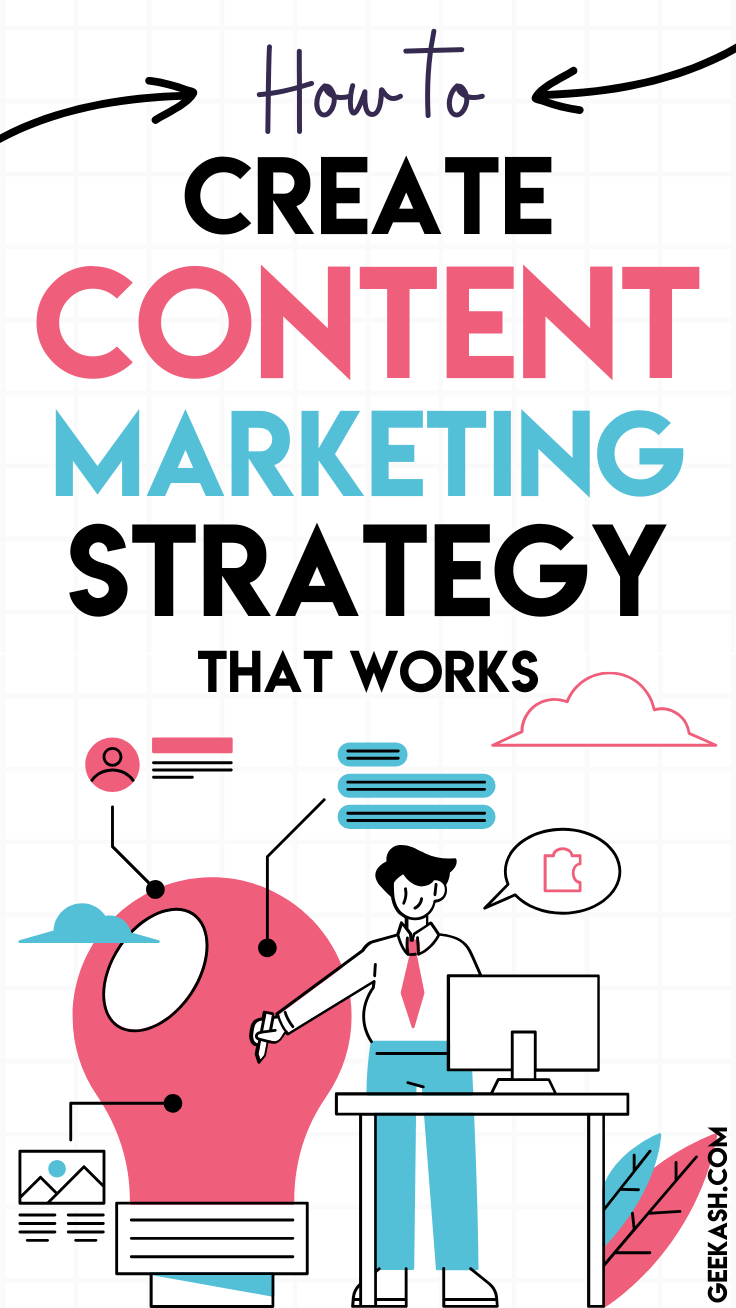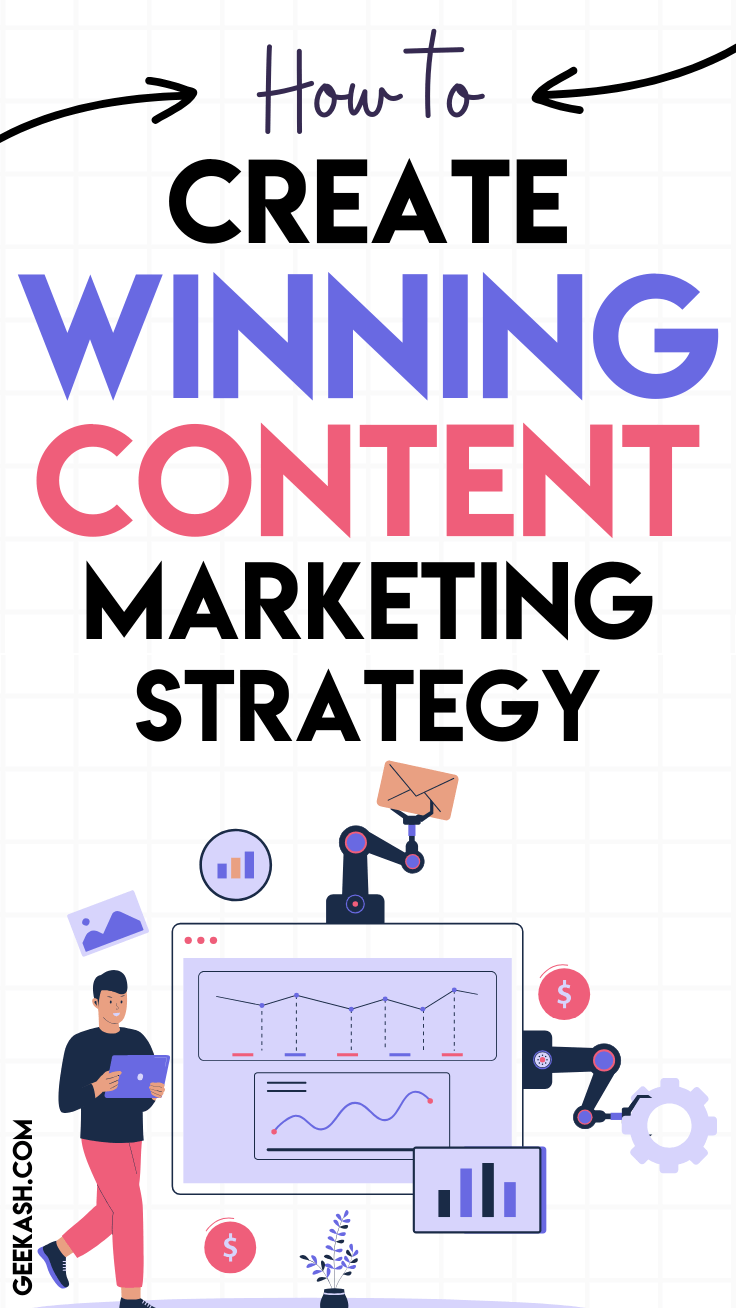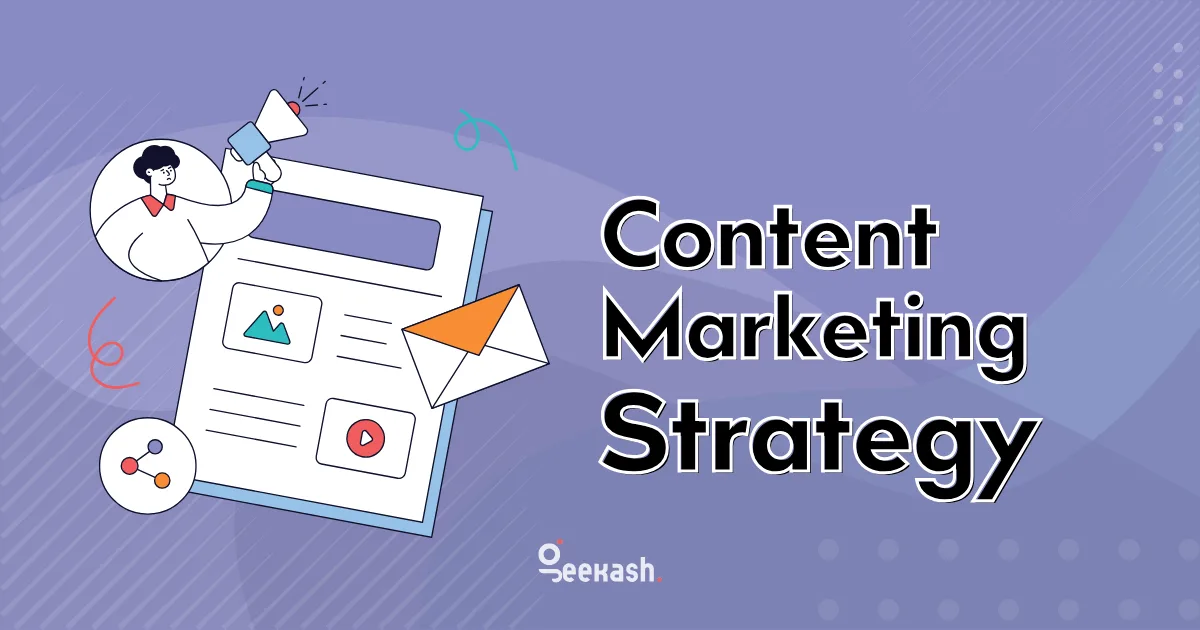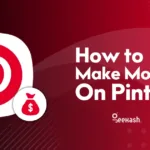A shocking statistic reveals that 63% of businesses lack a documented content marketing strategy.
The numbers tell an interesting story – businesses with documented strategies are 3 times more likely to succeed in their content marketing efforts. Simple logic shows that random content creation without proper strategy resembles throwing ideas against a wall to see what sticks.
Your content marketing strategy doesn’t need complexity to succeed. A systematic approach makes the difference, whether you’re building from ground zero or refreshing your current strategy.
Want to join the league of successful content marketers? We’ll show you practical steps in this piece that will help create and implement a content marketing strategy that delivers real results. But before we begin, let’s know what a winning content marketing strategy is and why we need it.
What’s a Winning Content Marketing Strategy
Imagine you’re planning a party (stick with me here). A content marketing strategy is kind of like that, but instead of planning snacks and music, you’re planning content that’ll grab your audience’s attention and maybe even convince them to buy what you’re selling. It’s all about figuring out three main things:
- Who’s coming to your “party” (aka your target audience)
- What kind of “entertainment” you’ll provide (the type of content)
- Where you’ll host this shindig (how you’ll distribute the content)
Let’s break it down with a real-world example. Say you’re running a shipping company and want to drum up some business:
- Your guest list (the “who”) might be college students. You know, those folks who need to haul their stuff to and from dorms every year.
- Your entertainment (the “what”) could be super helpful blog posts. Think along the lines of “The Ultimate College Packing List: What to Bring and What to Leave Behind.”
- Your venue (the “where”) might be good old Google. You want your content to show up when students are frantically searching for “how to pack for college” at 2 AM.
So, there you have it! A content marketing strategy is just a fancy way of saying you’re planning to create stuff that people actually want to see, in a place where they’re likely to find it. And hey, if it helps them decide to use your service in the process, even better!


Why do you need a content marketing strategy?
You know how frustrating it is when you’re on a road trip and you’ve got no clue where you’re going? No map, no GPS, just you and the open road. Sure, you might eventually get to your destination, but boy, what a headache!
Well, running your content marketing without a strategy is kinda like that. You’re just throwing stuff out there and hoping it sticks. Not exactly a recipe for success, right?
Here’s the deal: a solid content marketing strategy is like your trusty roadmap. It helps you figure out where you’re going and how to get there. It’s all about making sure every blog post, video, or social media update you create is actually doing something for your business. No more random acts of content!
Think about it this way: with a strategy, you’re not just shooting in the dark. You can actually see what’s working and what’s not. It’s like having a superpower that lets you make smart decisions about your content. Plus, it keeps everyone on your team singing from the same song sheet. No more confusion about what message you’re trying to get across.
And let’s be real, consistency is key when it comes to building a brand people trust. Your strategy helps you nail that consistent voice and message across all your content. It’s like being that reliable friend who always shows up – people start to count on you.
Bottom line? Your content marketing strategy is like your secret weapon. It helps you stay laser-focused, use your resources wisely, and make your content pack a punch. Whether you’re trying to get your name out there, drive more audience to your website, or nudge potential customers towards making a purchase, having a winning strategy is crucial.
So, don’t leave your content marketing up to chance. Grab that map, plot your course, and get ready to see some serious results. NOW LET’S BEGIN.
How to Create a Content Marketing Strategy
You know what? I’ve noticed something funny about this whole process. It seems like everyone’s trying to turn it into some kind of rocket science! I mean, I’ve been through the wringer with this one – reading guide after guide, each one more confusing than the last. It felt like I needed a PhD in marketing and a year’s sabbatical just to figure it out!
But here’s the thing: it doesn’t have to be that complicated. Not even close.
So, I thought to myself, “Why not break it down into something simple?” Something that doesn’t require an entire marketing team and a supercomputer to decipher.
Sound good? Let’s dive in and make this process as painless as possible, shall we?
1. Define Your Content Marketing Goals and KPIs
Clear objectives are the foundation of any successful content marketing strategy. Recent studies show that marketers who set goals are 376% more likely to report success. The numbers speak for themselves – 89% achieve their objectives consistently.
Setting SMART Content Marketing Objectives
Your content marketing objectives must follow the SMART framework to work. This proven method will give a solid foundation by making your goals:
- Specific: Pick one particular metric you want to improve
- Measurable: Create quantifiable goals with clear metrics
- Attainable: Set realistic and achievable objectives
- Relevant: Match your overall business objectives
- Time-bound: Define clear deadlines for achievement
Identifying Key Performance Metrics
The right KPIs play a vital role in measuring your content’s success. Your KPIs should be quantitative, relevant, and easy to calculate in all stages of the conversion funnel. You should think about what truly impacts your business performance. A metric that could double your business impact is likely a good KPI.
Each content goal needs its own set of KPIs. To name just one example, see lead generation – you’ll need to track conversion rates and MQLs. Organic growth requires monitoring website traffic and search rankings. The secret lies in matching your metrics to your specific objectives.
Arranging Content Goals with Business Strategy
Your content should contribute to your larger business objectives. This connection propels development instead of just creating noise. Each content piece should fit into your overall business framework and support specific goals.
Progress monitoring should happen regularly. Simple measurement against your goals increases your chances of staying on track. Content marketing takes time to show results – positive ROI typically appears months after publication. This makes consistent tracking and measurement vital.
Pro Tip: Choose 3-5 main goals for your content marketing efforts. Prioritize them based on their importance to your company. This focused strategy helps you use your resources effectively.
2. Research Your Target Audience and Competition
Your target audience and competition knowledge are vital to developing a winning content marketing strategy. Studies show that marketing personas make websites 2-5 times more effective and easier to use.
Creating Detailed Buyer Personas
Your buyer personas should capture your ideal customers’ essence beyond simple demographics. A complete buyer persona helps you create content that strikes a chord with your audience. The most important elements include:
- Demographics and firmographics
- Day-to-day challenges and pain points
- Professional goals and aspirations
- Content consumption priorities
- Decision-making processes
- Information sources and platforms
Recent research indicates that 65% of marketers struggle to produce engaging content because they don’t understand their audience well enough. Detailed personas help you create content that speaks directly to your audience’s needs and priorities.
Conducting Competitive Content Analysis
A systematic competitive content analysis shows what works in your industry. The process explains content types, formats, and distribution channels that strike a chord with your target audience.
Your effective competitive analysis should:
- Identify key competitors in your space
- Analyze their content types and formats
- Review content quality and depth
- Review their distribution channels
- Assess engagement metrics and performance
Analyzing successful competitors provides a clear roadmap to your own content success. Their top-performing content deserves special attention to identify what makes it work.
Identifying Content Gaps and Opportunities
Content gaps offer untapped opportunities to distinguish your brand and provide value to your audience. Studies indicate that 91% of businesses use video as a marketing tool, yet many industries still have significant gaps in video content.
Valuable content opportunities emerge when you get into both keyword gaps and topic gaps in your market. SEO platforms can help you find underserved topics and keywords with high potential. Long-tail keywords deserve extra focus as they have shown a 2.5% higher click-through rate than popular keywords.
Pro tip: Your organization’s proprietary data opportunities matter. Your unique insights and data can create original content that fills gaps in your industry.
Note that market dynamics and audience priorities evolve continuously, so your audience research and competitive analysis need regular updates. This ongoing process will give a relevant and effective content marketing strategy.
3. Develop Your Content Strategy Framework
A strong content strategy framework paves the way to long-term success. The latest data reveals that a well-laid-out content strategy creates two-way communication between your brand and audience.
Choosing Content Types and Formats
Your content mix should reflect your audience’s priorities and consumption habits. Here are the most effective content formats to think over:
- Blog Posts and Articles: Short-form articles remain top performers, with 55% of content marketers reporting them as their most successful format
- Videos: Help attract 300% more traffic compared to other formats
- Infographics: Simplify complex information visually
- Podcasts: Growing in effectiveness for brand building
- White Papers and Ebooks: Excellent for lead generation and intellectual influence
- Interactive Content: Lets audience participate while collecting valuable information
Creating Content Pillars and Themes
Content pillars are the foundations of your strategy that help you stay consistent and give you ideas during creative blocks. Your content pillars should be arranged with your business goals while meeting audience needs.
You can develop effective content pillars by:
- Identifying core themes based on your expertise
- Researching trending topics in your industry
- Creating sub-topics under each pillar
- Mapping content types to each pillar
- Making sure pillars match your overall vision
The content pillars need monthly reviews to ensure they match your brand’s evolving vision.
Building Your Content Calendar
A content calendar is a vital tool that streamlines your strategy and ensures consistent delivery. Studies show that it helps streamline content creation and distribution processes, making your marketing efforts work better.
Your calendar should include these key elements:
- Publishing dates
- Content topics and titles
- Target keywords
- Content formats
- Assigned team members
- Distribution channels
Pro Tip: The calendar helps you spot busy periods and plan content production. This gives teams and individuals time to prepare for high-demand months by completing projects before publishing dates.
The calendar should be flexible enough to respond to external events while keeping a consistent publishing schedule. Regular performance metric tracking will help optimize your calendar over time.
4. Establish Your Content Creation Process
A well-laid-out content creation process drives your content marketing strategy forward. Studies reveal that companies with documented content processes are 67% more likely to consider their content marketing efforts successful.
Setting Up Content Workflows
Your content workflow needs a systematic and expandable approach. This gives you consistent quality in all content pieces. Simplified processes help you avoid bottlenecks and keep your content production running smoothly.
Here’s the quickest way to create content:
- Content Planning & Briefing
- Research & Outline Development
- Content Creation
- Internal Review
- Revisions & Optimization
- Final Approval
- Publication & Distribution
Research shows teams with defined workflows can produce content up to 40% faster without compromising quality.
Building Your Content Team
The structure of your content team shapes your strategy’s success. Though 67% of content teams operate with fewer than 10 people, success depends on covering essential roles rather than team size.
Your content team should include these vital roles:
- Content Manager: Runs daily operations and guides content creators
- Content Strategist: Plans content direction and spots opportunities
- Content Creators: Writers, designers, and multimedia specialists
- SEO Specialist: Takes care of content optimization
- Editor: Keeps quality and consistency in check
- Distribution Specialist: Manages content promotion
Teams that focus on roles instead of specific job titles report success 376% more often. Small organizations often have people handling multiple roles.
Creating Content Guidelines and Standards
Content standards help maintain consistency and quality throughout your content. These standards act as guardrails to keep your content in line with your brand’s voice and main goals.
Your content guidelines should cover:
Quality Standards: Set clear expectations for your brand’s content quality. Content meeting these standards gets 3x more leads.
Style Guide: Put your brand’s voice, tone, and writing rules in writing. This helps multiple creators stay consistent.
Technical Requirements: List your formatting, SEO needs, and technical details for different content types.
Review Process: Set up clear review cycles and approval steps to control quality.
Note that your guidelines should be available to every team member. Regular reviews help too. Teams with documented content standards work 40% more efficiently.
Pro Tip: Store all your content guidelines and templates in one place. New team members can learn faster, and everyone produces consistent quality content.
5. Implement Your Content Distribution Strategy
Great content needs a strong distribution strategy to reach your target audience. Recent studies show that distributing content through multiple channels can increase reach by up to 300% compared to single-channel distribution.
Choosing Distribution Channels
Your content distribution strategy should use three main channel types:
- Owned Media: Your website, blog, email newsletters, and social media profiles where you have complete control over content
- Earned Media: Third-party sharing, backlinks, and media coverage that verify your content quality
- Paid Media: Sponsored content and advertising that offer immediate, measurable results
Research shows that 90% of successful B2B marketers use social media platforms to distribute content. About 79% employ blogs and 73% use email newsletters.
Content Promotion Tactics
These proven promotion strategies will help maximize your content’s reach:
- Optimize Your Owned Channels
- Make content mobile-friendly and responsive
- Create attention-grabbing headlines
- Use strategic keywords for better SEO visibility
Your employees can magnify your reach effectively. Studies show that content shared by employees receives 8x more engagement than content shared through brand channels.
Building relationships with journalists and media outlets in your industry leads to earned media success. This approach increases organic reach and provides valuable backlinks to your website.
Paid vs Organic Distribution
Finding the right balance between paid and organic distribution is vital for your content marketing strategy. Organic content builds trust and sustainable long-term relationships. Paid promotion offers precise targeting and immediate results.
Organic Distribution Benefits:
- Builds authentic audience relationships
- Offers sustainable long-term results
- Requires no direct monetary investment
Paid Distribution Advantages:
- Provides immediate visibility
- Offers advanced targeting capabilities
- Delivers measurable ROI
Recent data shows that organic social media generates 100% more leads than paid social media. Paid promotion works best with time-sensitive content or specific audience targeting.
These key factors will help optimize your distribution strategy:
- Your target audience’s preferred platforms
- Content type and format
- Available budget
- Campaign objectives
- Timeline requirements
Pro Tip: Start with your owned channels as they provide complete control over content distribution and help you test different approaches before investing in paid promotion.
Track key metrics across all distribution channels to measure success and improve your strategy. This evidence-based approach ensures your content reaches the right audience through the most effective channels.
6. Measure and Optimize Content Performance
The right content marketing strategy needs proper measurement and optimization. Studies show that marketers who track their content metrics are 5 times more likely to report success in their content marketing efforts.
Tracking Content Marketing Metrics
Your content’s success relies on tracking the right metrics. A marketing ROI of 5:1 (500%) shows strong performance. Any ROI below 2:1 (200%) signals poor results. These metrics need your attention:
| Metric Category | Key Indicators | Target Benchmark |
|---|---|---|
| Engagement | Time on page, Bounce rate | 60-80% scroll depth |
| Traffic | Page views, Unique visitors | 5% monthly growth |
| Conversion | Click-through rate, Lead generation | 1.5-3% conversion rate |
| Social Impact | Shares, Comments | 5-15% share rate |
Analyzing Content ROI
The formula (Revenue from Content – Cost of Content) / Cost of Content × 100 helps you calculate your content marketing ROI. This simple math shows how well your strategy works financially.
Success stories from the field prove this point:
- SAP’s content marketing got a 650% ROI with $100,000 first-year costs
- Capgemini’s storytelling website got 100,000 LinkedIn followers and made $1 million in sales within a year
Your ROI tracking can improve if you:
- Document all content creation and distribution expenses
- Track revenue generated from content-driven conversions
- Monitor Customer Lifetime Value (CLV)
- Calculate Customer Acquisition Cost (CAC)
Optimizing Based on Data Insights
Informed decisions should guide your content optimization strategy. Research shows that data-backed content gets more likes, shares, comments, and saves. Here’s what works best:
Monitor Essential Analytics Tools:
- Google Analytics for complete demographic data
- Google Search Console for SEO performance
- Social media analytics for engagement metrics
- Email marketing metrics for newsletter performance
Implementation Best Practices:
- Set clear performance measures
- Review metrics monthly to spot patterns
- Adjust your strategy based on data
- Test different content formats and topics
Content marketing works like a good diet – it needs consistency and investment to show results. The core team at 50% of companies plans to grow this year and with good reason too.
Pro Tip: Numbers tell only part of the story. User feedback through surveys, comments, and social interactions teaches you about your content’s true impact.
These indicators matter most when fine-tuning your content strategy:
- Web traffic patterns and sources
- Conversion rates across different content types
- Social media engagement metrics
- SEO performance and keyword rankings
- Customer retention rates
Modern content management systems make shared marketing activities easier. Teams save time and communicate better. This approach helps you plan content, track performance, and make smart decisions about your strategy.
Your existing content needs regular reviews to stay relevant and valuable. Small changes like better CTAs or new infographics can boost click-through rates significantly.
Conclusion
A solid content marketing strategy needs a structured plan that builds on data and keeps improving. Your written plan works like a map that guides your content work from setting goals to checking how well it performs.
Great content marketing needs clear goals, knowing your audience well, creating the right content, and sharing it smartly. These pieces fit together to build a strategy that delivers business results.
Companies with written strategies get substantially better outcomes. You can start using these seven steps now and track your progress. Keep checking your metrics and tweaking your approach. This will help your content marketing become more focused and successful as time goes on.










